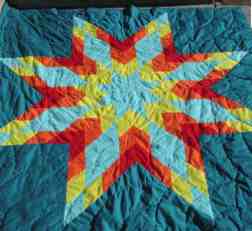You probably know we have over on the Growing Math site dozens of lesson that include our games integrating math and social studies. Sometimes, though, we want to share with you lessons and resources that have inspired or greatly benefited us.
Teaching with Primary Sources Teachers Network
I will admit right off the bat that I spent way more time than I probably should have on this site https://tpsteachersnetwork.org/ Here are three reasons why you should check it out.
TPS Network is has great lessons, available for free
Sign up! It is completely free and has so many ideas. I teach math. Fractions, geometric shapes and pie charts haven’t changed much in the past dozen years, so even lessons from ten years ago are still really useful, like this one on quilts and math by Sarah Kaplan. I absolutely loved it for several reasons:
- The math MADE SENSE! For example, if 3 triangles make up a trapezoid, then a trapezoid will cost 3x as much as a triangle.
- The math was practical. If you are making a quilt, you’ll want to know how much the material will cost you (duh).
- The quilts were very original and artistic. I can see students being interested in this lesson as artwork and then staying for the math.
The TPS Network has lessons at all grade levels from Pre-K through grade 12
This geometry lesson using photographs of notable buildings teaches about the use of circles, triangles and other geometric shapes in architecture is for students in grades 9 and 10, although it could certainly be used with gifted middle school students.
TPS Network has thoughtful discussions
If, like me, you are tired of social networks that are full of shouting and insults, the Teaching with Primary Sources Network might be worth your time for this feature alone. For example, in this lesson about a project making quilts with English language learners, I might have agreed with the person who questioned the educational value of this activity. However, in the discussion, it was pointed out that a lot of language learning can happen in low-key conversation.
What’s not to love? Getting lost in the trees
There can be so much on the site that it can be overwhelming. There are over 10,000 members, mostly teachers and librarians, so, as you can imagine, there is a lot of valuable information on the site but it is also impossible to follow all of the discussion. I would suggest joining a couple of groups that interest you and maybe following some people who seem to have similar interests. I also recommend creating your own album(s) with resources you can use.
My only complaint about this site is the search feature could be more user-friendly for creating lessons or units. If I could search by a combination of grade and topic, say sixth-grade mathematics, that would be really helpful. As I said, I spend a LOT of time on this site but much of it is more interesting than useful for creating lessons. For example, I found Ann Ellicott Madeira’s discussion of false arithmetic in code-breaking fascinating but it was nothing I could use in teaching decimals to fifth-graders.

